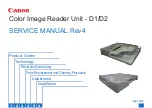
31
UK
Pre-setting can be selected under the "Current parameter set" header� This is done by selecting a param-
eter set in the drop-down menu� This parameter is now active and loaded, and the headers are updated�
When all the desired changes have been made, they can be saved� The changes to the settings can be
discarded by pressing the [Reload configuration] button� The parameter set can be reset by pressing the
[Load default settings] button�
Under the "Transmission power" header, the parameters of the transmission path can be entered; these
include the transmission power, transmission channel (only EU) and spectrum� The applicable standards
in the related approval region are to be observed when setting the transmission power�
Note
To operate the reader in accordance with the related national standards, the antenna gain and the cable
attenuation must be taken into account in the transmission power setting� In no circumstances is it al-
lowed to exceed the permitted transmission power� Failure to observe this instruction can result in non-
compliant operation of the reader rendering void the unit's type approval�
Transmission power
The radiated power is limited in Europe in accordance with ETSI 302208 to 2 W ERP� In the FCC region,
max� 1 W connected RF power applies with an antenna gain of 6 dBi� If the antenna gain is greater than
6 dBi, the RF power must be reduced accordingly� While the European standard refers to a half-wave
dipole, FCC part 15 refers to an isotropic radiator�
To set the transmission power, the length-dependent cable attenuation and the antenna gain must be
included in the calculation of the transmission power� An example for the calculation of the transmission
power for Europe and FCC is given in the following�
The following applies to the European approval region:
P
Reader
= P
ERP
+ D
Kabel
- G
HW
P
Reader
��� Transmission power of the reader in dBm
P
ERP
��� Transmission power based on a half-wave dipole in dBm
D
Kabel
��� Cable attenuation in dB
G
HW
��� Antenna gain based on a half-wave dipole
The cable attenuation is the length-dependent attenuation of the cable at the related frequency:
D
Kabel
= l*D
dB/m
D
Kabel
��� Cable attenuation in dB
l ��� Length in m
D
dB/m
��� Attenuation in db/m at frequency
The antenna gain is stated in various different units� These units include dBi and dBic� The units dBi and
dBic refer to an isotropic (spherical) radiator, where dBic refers to a circularly polarised isotropic radiator
and dBi to a linearly polarised isotropic radiator�
In the European approval area, the radiated power must not exceed 2 W ERP� This figure refers to a
half-wave dipole� The relationship shown below exists between an isotropic radiator (dBi) and a half-wave
dipole�
G
HW
= G
isot
- 2,14 dB
G
HW
��� Gain based on a half-wave dipole
G
isot
��� Gain based on an isotropic radiator in dBi
If the gain of the antenna is referred to the polarisation of a circular isotropic antenna (dBic), the linear
gain of the antenna is 3 dB lower� As a result the transmission power can be increased by 3 dB�
G
HW
= G
isot
- 2,14 dB - 3 dB
G
HW
��� Gain based on a half-wave dipole
G
isot
��� Gain based on an isotropic radiator in dBic







































